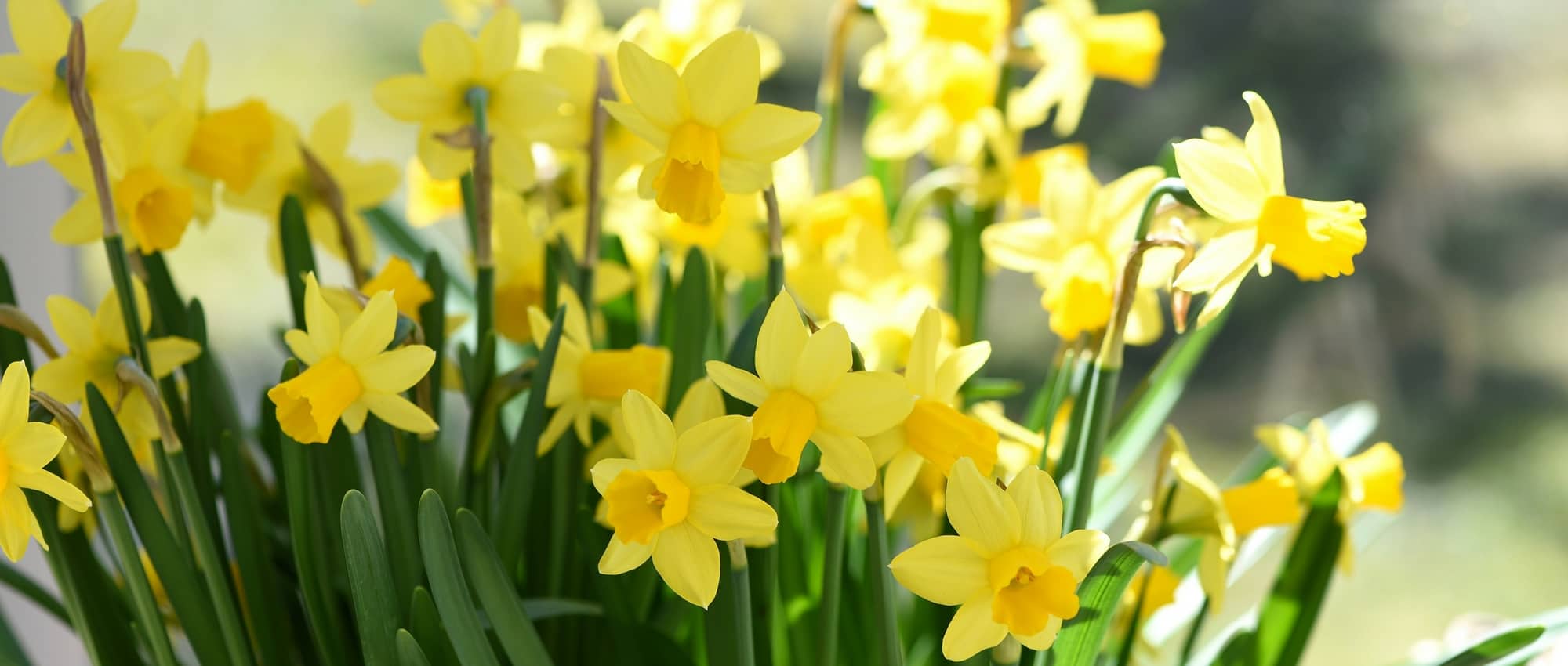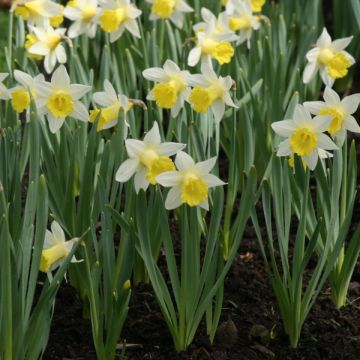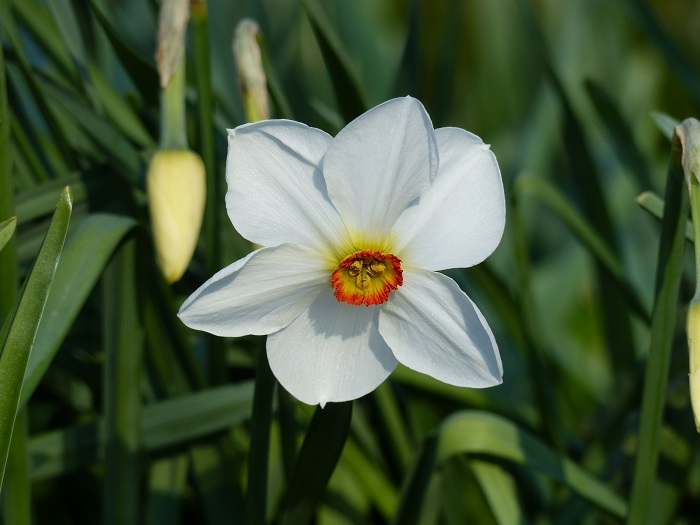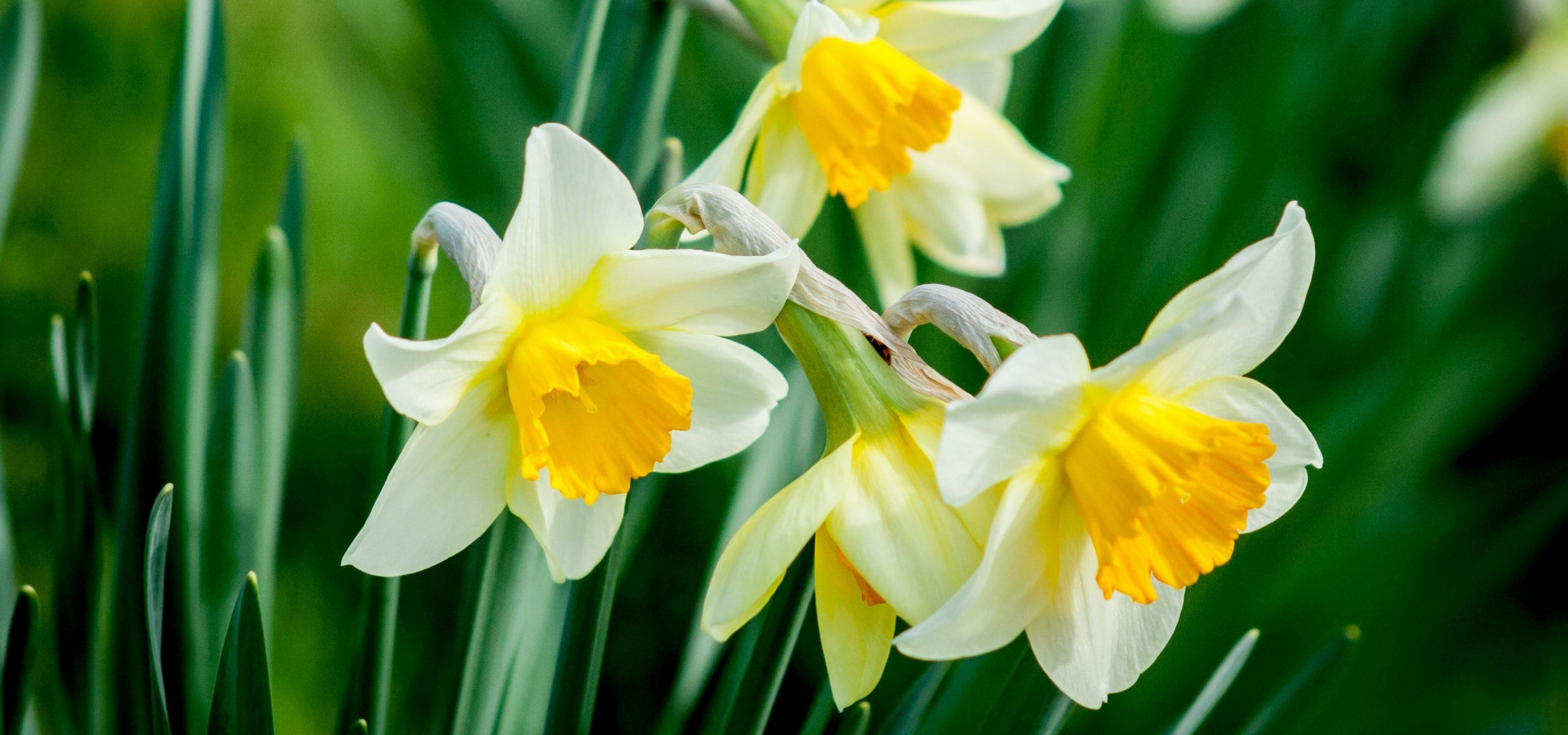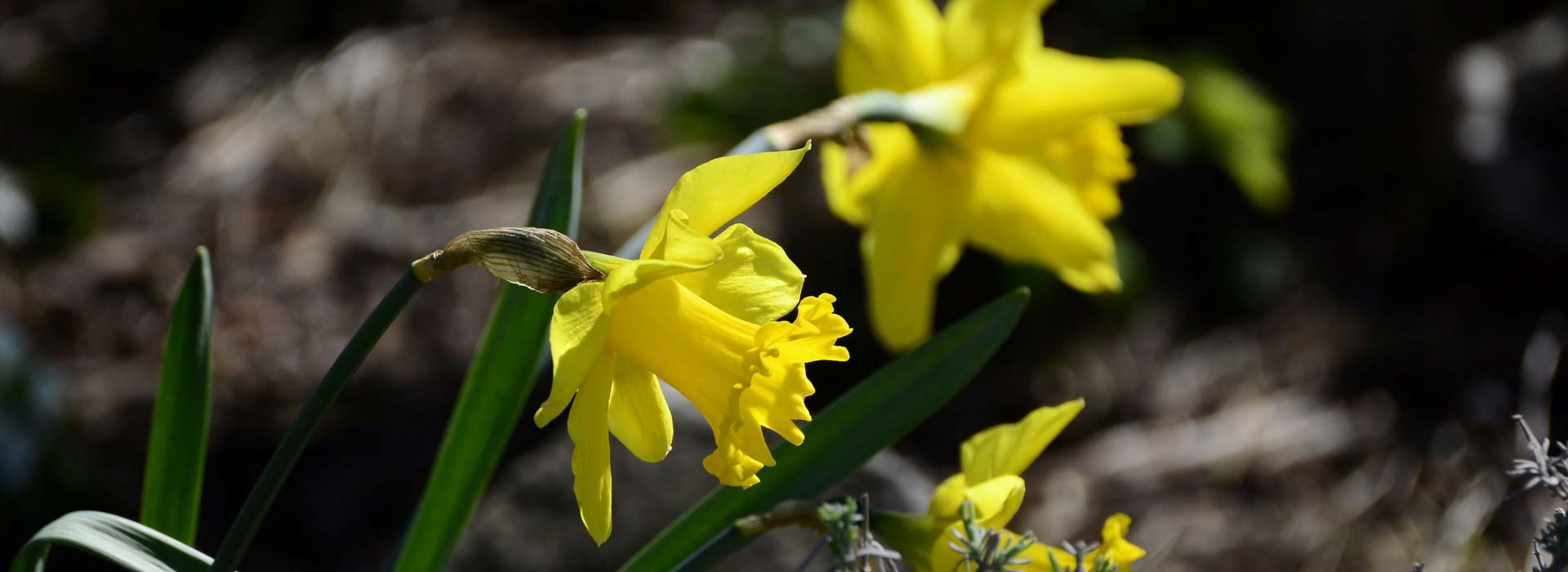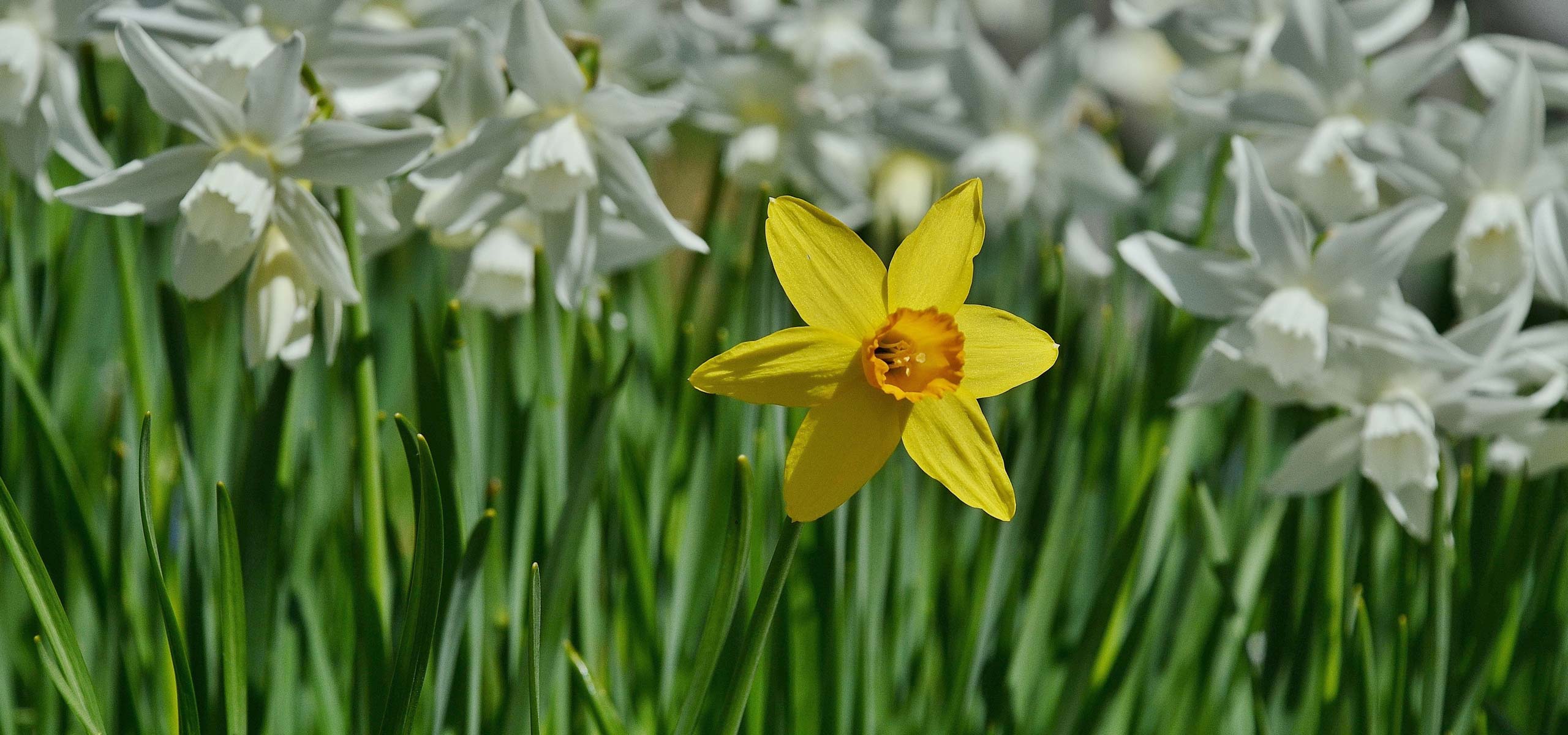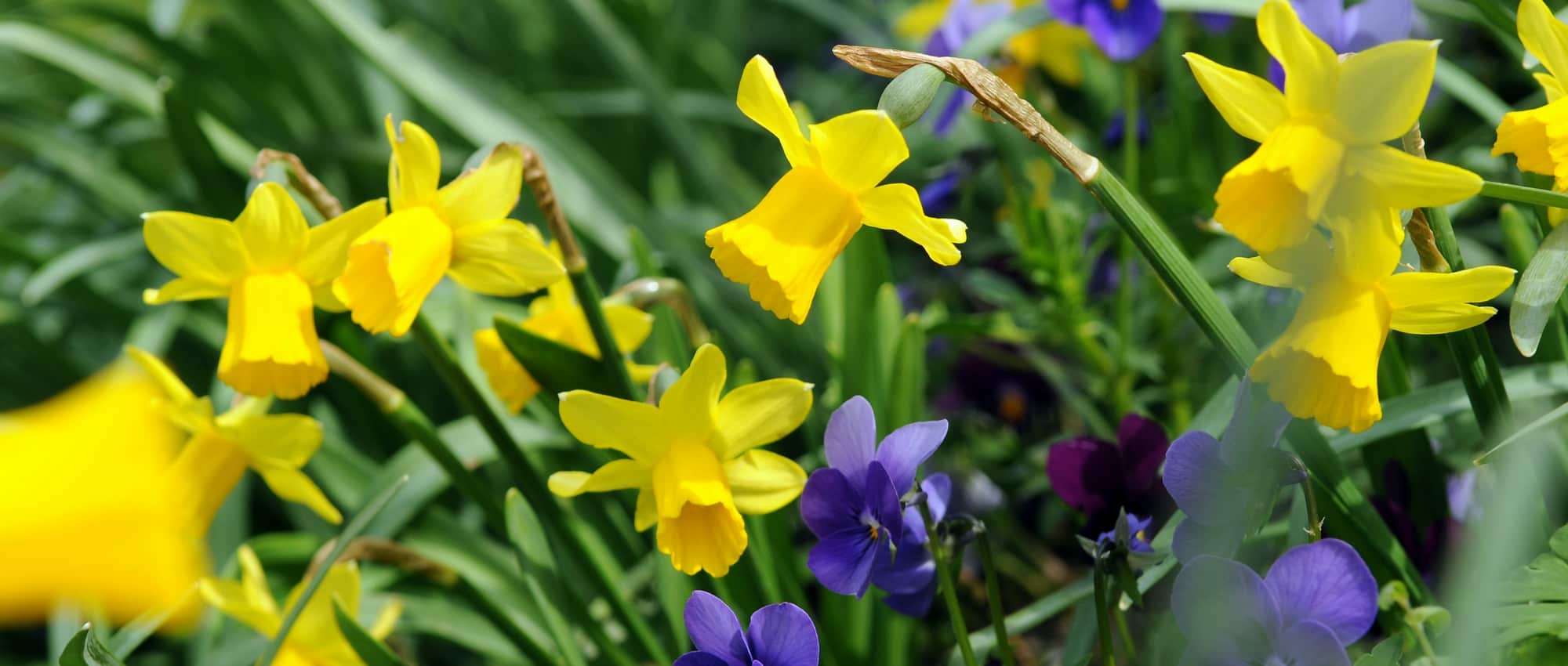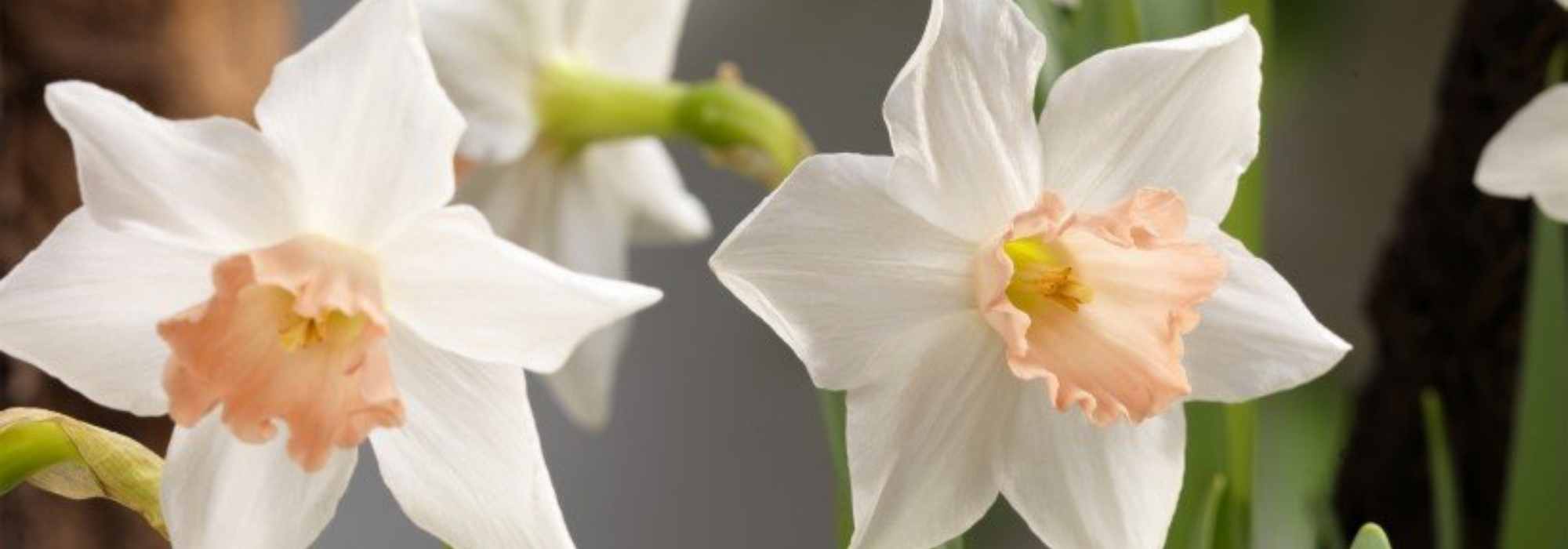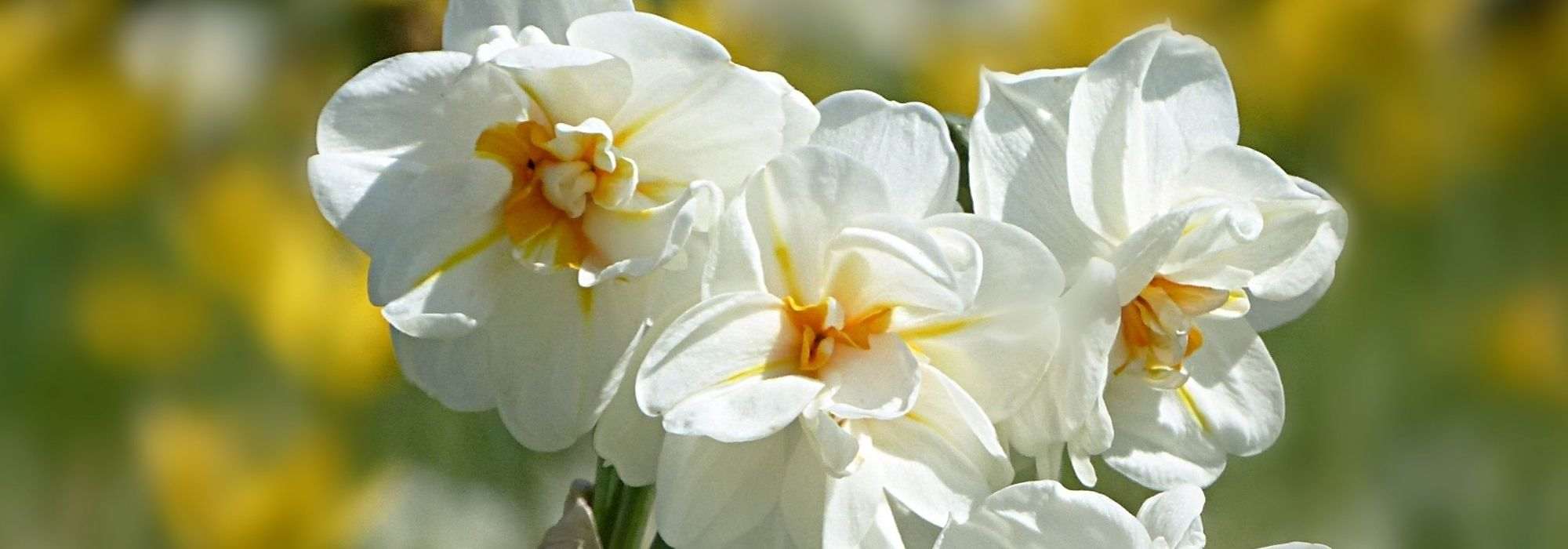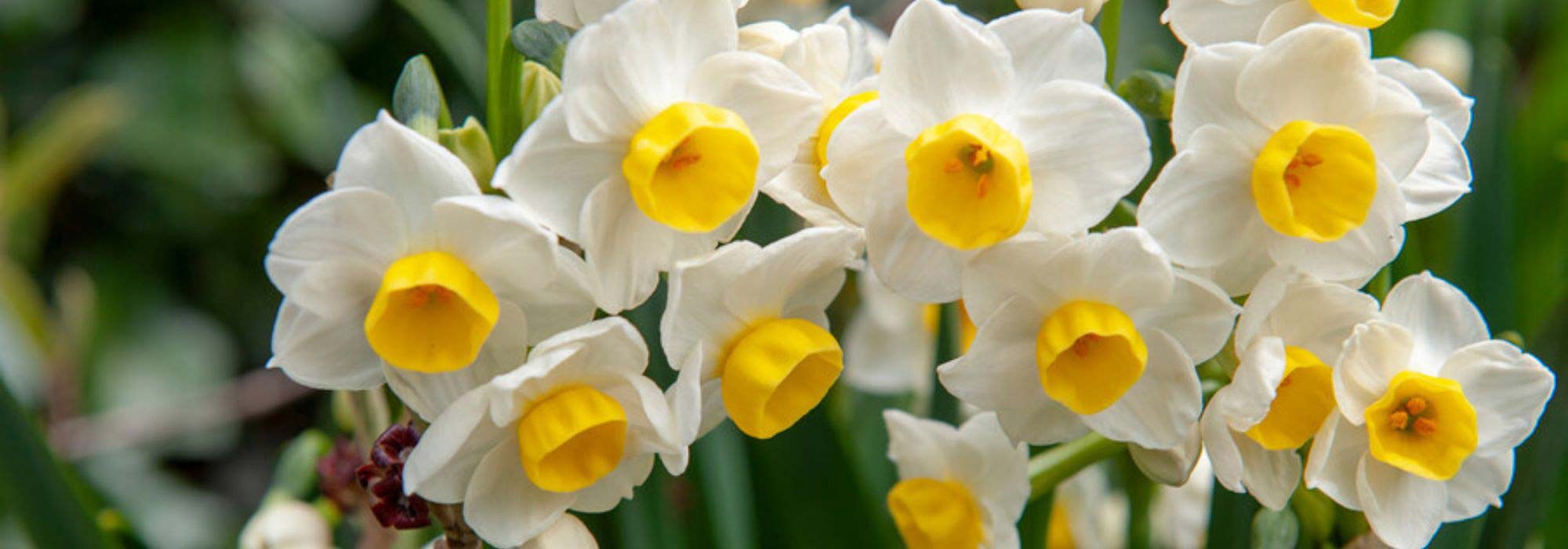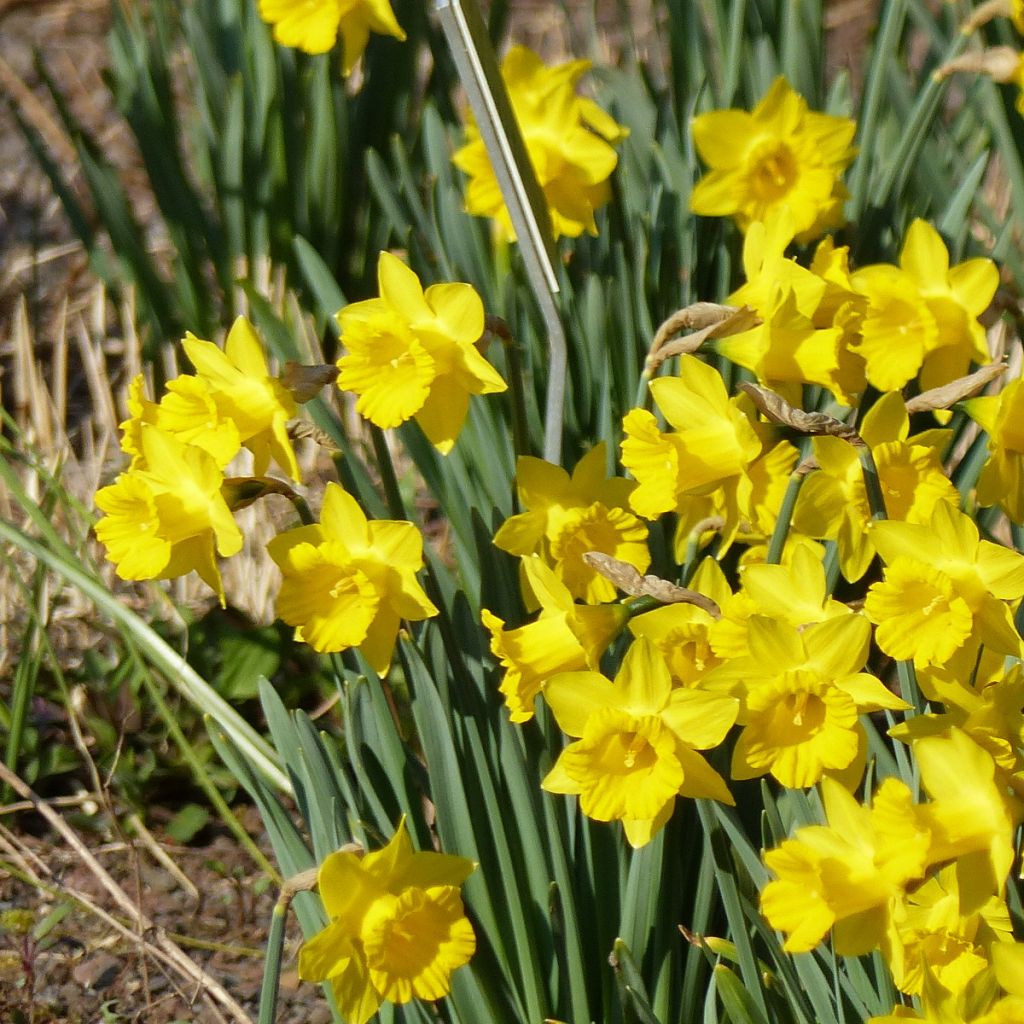

Narcissus pseudonarcissus obvallaris
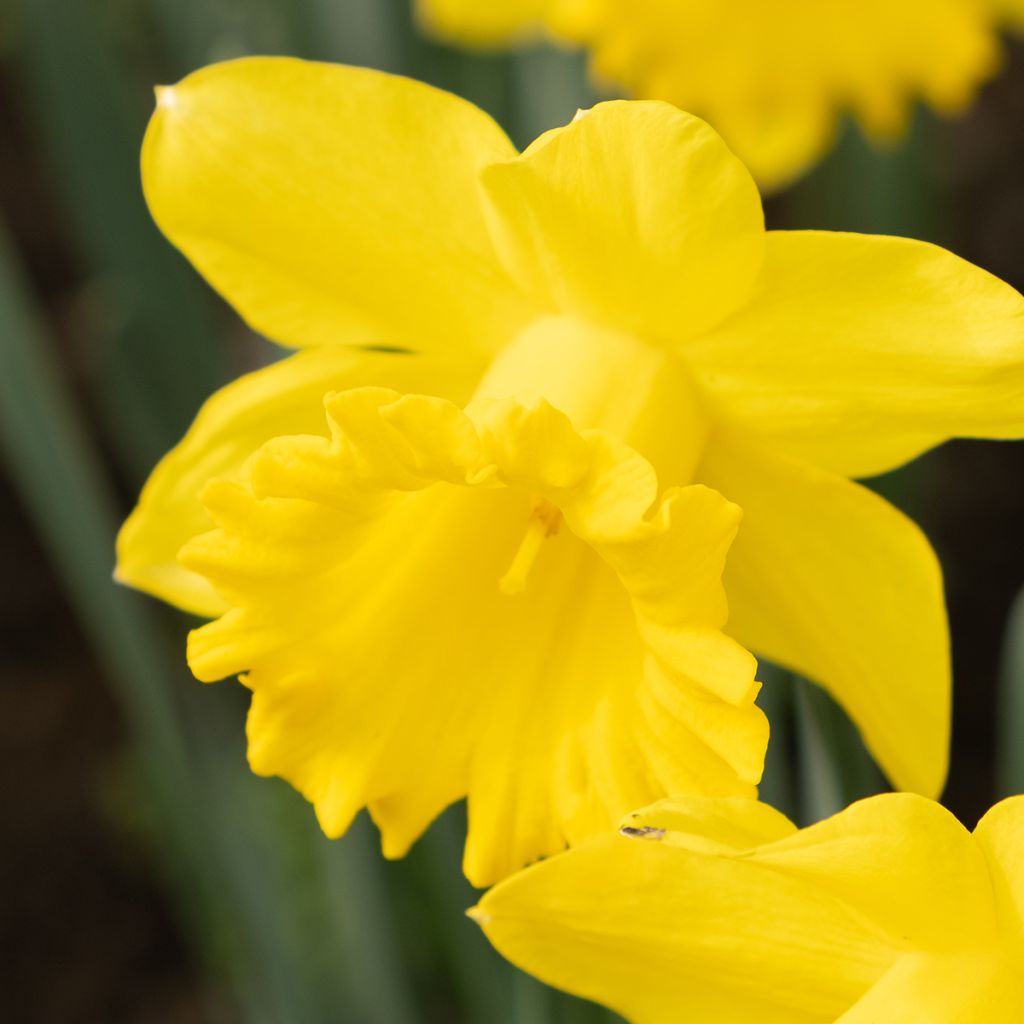

Narcissus pseudonarcissus obvallaris
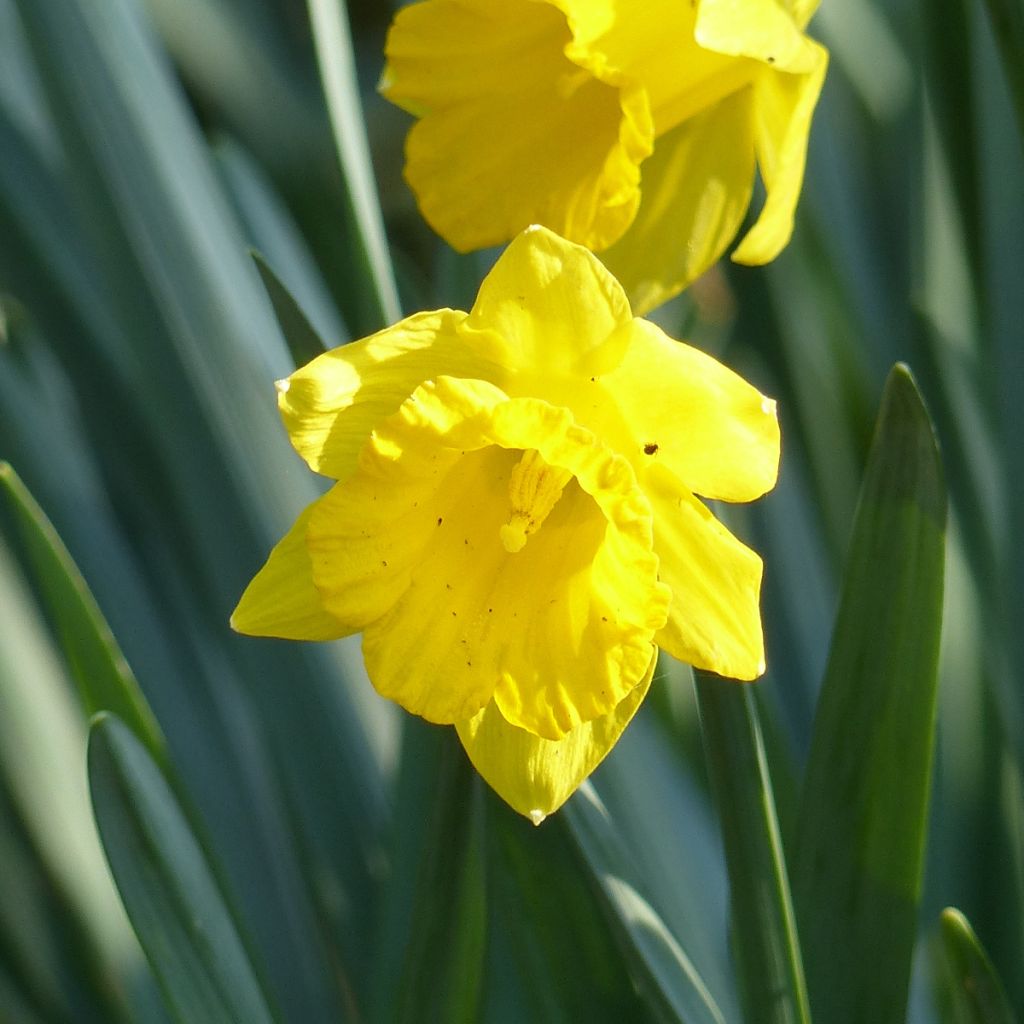

Narcissus pseudonarcissus obvallaris
Narcissus pseudonarcissus obvallaris
Narcissus pseudonarcissus Obvallaris
Tenby daffodil, Wild daffodil, Lent lily
The daffodils were planted in September 2021 and the flowering is superb. I didn't count, but practically all the bulbs have produced flowers. The grape hyacinths, which were planted at the same time, have also thrived. They were placed on the edge of the shade of large cedars and the spot seems to suit them well.
Alain, 23/03/2022
Special offer!
Receive a €20 voucher for any order over €90 (excluding delivery costs, credit notes, and plastic-free options)!
1- Add your favorite plants to your cart.
2- Once you have reached €90, confirm your order (you can even choose the delivery date!).
3- As soon as your order is shipped, you will receive an email containing your voucher code, valid for 3 months (90 days).
Your voucher is unique and can only be used once, for any order with a minimum value of €20, excluding delivery costs.
Can be combined with other current offers, non-divisible and non-refundable.
This plant carries a 6 months recovery warranty
More information
We guarantee the quality of our plants for a full growing cycle, and will replace at our expense any plant that fails to recover under normal climatic and planting conditions.


Would this plant suit my garden?
Set up your Plantfit profile →
Description
Narcissus obvallaris is an emblematic botanical species, generally known as the wood daffodil. It is recognised by its completely golden yellow flowers, composed of a quite large tube surrounded by a wide corolla. This bulb is endemic to England and Wales. It is quite rare in horticultural trade, but universally appreciated for its generous flowering that accompanies the first beautiful days of spring. This daffodil appreciates clear undergrowth and moist soils, where it naturalises very easily.
Narcissus obvallaris was once considered a subspecies of N. pseudonarcissus (false daffodil). It is now recognised as a separate species. The appearance of its flower is quite different, even though these two species appreciate moist and semi-shaded places. These herbaceous bulbous plants belong to the Amaryllidaceae family. The wood daffodil has a large ovoid bulb that produces a bluish-green basal tuft of ribbon-like, flat and fleshy leaves in spring. Flowering usually takes place in April and May. Each bulb gives rise to a stem 25 to 30cm (10 to 12in) high bearing a solitary, bright yellow flower, 5 to 6cm (2in) wide.
Narcissus obvallaris should be planted en masse in a somewhat wild area of the garden or at the base of deciduous trees and bushes. As the famous poem by William Wordsworth says, they will show their full potential "And then my heart with pleasure fills, And dances with the daffodils" ('The Daffodils').
The wood daffodil is low-maintenance. It grows in any well-tilled, humus-rich soil, although results are slightly poorer in excessively acidic soils.
There are so many daffodil cultivars that one can enjoy them for three months in spring without ever getting tired. They all have in common the ability to naturalise easily, to offer an infinite range of yellow and white shades, and to often emit sweet fragrances. Grow them in large clumps in lawns or at the edge of flower beds (at least 20 bulbs) for an enhanced effect. Pair them with squills, hyacinths, early-flowering botanical tulips, forget-me-nots, pansies, or liverworts.
Narcissus pseudonarcissus obvallaris in pictures




Plant habit
Flowering
Foliage
Botanical data
Narcissus
pseudonarcissus
Obvallaris
Amaryllidaceae
Tenby daffodil, Wild daffodil, Lent lily
Western Europe
Other Botanical Daffodils
View all →Planting and care
Narcissi bloom from March to May and come back every year. They are very easy to grow and can thrive in both the shade of an understory and a sunny flower bed. Plant them at a depth of 10cm (4in) and spaced 10cm (4in) apart. Group them in sets of at least 5 bulbs, in patches of uniform colours or mixed.
You can plant them in lawns. In this case, lift the turf, and dig and loosen the soil to a depth of at least 20cm (8in) (the length of a spade). Plant your bulbs, cover with soil, and replace the turf. Choose a spot where you won't mow, as the daffodil leaves must wither before cutting them. The bulb uses the leaves to rebuild itself and prepare the flowers for the following year. However, cut the flowers as soon as they fade to avoid seed formation, which would unnecessarily exhaust the bulb.
Planting period
Intended location
Care
Planting & care advice
-
, onOrder confirmed
Reply from on Promesse de fleurs
Haven't found what you were looking for?
Hardiness is the lowest winter temperature a plant can endure without suffering serious damage or even dying. However, hardiness is affected by location (a sheltered area, such as a patio), protection (winter cover) and soil type (hardiness is improved by well-drained soil).

Photo Sharing Terms & Conditions
In order to encourage gardeners to interact and share their experiences, Promesse de fleurs offers various media enabling content to be uploaded onto its Site - in particular via the ‘Photo sharing’ module.
The User agrees to refrain from:
- Posting any content that is illegal, prejudicial, insulting, racist, inciteful to hatred, revisionist, contrary to public decency, that infringes on privacy or on the privacy rights of third parties, in particular the publicity rights of persons and goods, intellectual property rights, or the right to privacy.
- Submitting content on behalf of a third party;
- Impersonate the identity of a third party and/or publish any personal information about a third party;
In general, the User undertakes to refrain from any unethical behaviour.
All Content (in particular text, comments, files, images, photos, videos, creative works, etc.), which may be subject to property or intellectual property rights, image or other private rights, shall remain the property of the User, subject to the limited rights granted by the terms of the licence granted by Promesse de fleurs as stated below. Users are at liberty to publish or not to publish such Content on the Site, notably via the ‘Photo Sharing’ facility, and accept that this Content shall be made public and freely accessible, notably on the Internet.
Users further acknowledge, undertake to have ,and guarantee that they hold all necessary rights and permissions to publish such material on the Site, in particular with regard to the legislation in force pertaining to any privacy, property, intellectual property, image, or contractual rights, or rights of any other nature. By publishing such Content on the Site, Users acknowledge accepting full liability as publishers of the Content within the meaning of the law, and grant Promesse de fleurs, free of charge, an inclusive, worldwide licence for the said Content for the entire duration of its publication, including all reproduction, representation, up/downloading, displaying, performing, transmission, and storage rights.
Users also grant permission for their name to be linked to the Content and accept that this link may not always be made available.
By engaging in posting material, Users consent to their Content becoming automatically accessible on the Internet, in particular on other sites and/or blogs and/or web pages of the Promesse de fleurs site, including in particular social pages and the Promesse de fleurs catalogue.
Users may secure the removal of entrusted content free of charge by issuing a simple request via our contact form.
The flowering period indicated on our website applies to countries and regions located in USDA zone 8 (France, the United Kingdom, Ireland, the Netherlands, etc.)
It will vary according to where you live:
- In zones 9 to 10 (Italy, Spain, Greece, etc.), flowering will occur about 2 to 4 weeks earlier.
- In zones 6 to 7 (Germany, Poland, Slovenia, and lower mountainous regions), flowering will be delayed by 2 to 3 weeks.
- In zone 5 (Central Europe, Scandinavia), blooming will be delayed by 3 to 5 weeks.
In temperate climates, pruning of spring-flowering shrubs (forsythia, spireas, etc.) should be done just after flowering.
Pruning of summer-flowering shrubs (Indian Lilac, Perovskia, etc.) can be done in winter or spring.
In cold regions as well as with frost-sensitive plants, avoid pruning too early when severe frosts may still occur.
The planting period indicated on our website applies to countries and regions located in USDA zone 8 (France, United Kingdom, Ireland, Netherlands).
It will vary according to where you live:
- In Mediterranean zones (Marseille, Madrid, Milan, etc.), autumn and winter are the best planting periods.
- In continental zones (Strasbourg, Munich, Vienna, etc.), delay planting by 2 to 3 weeks in spring and bring it forward by 2 to 4 weeks in autumn.
- In mountainous regions (the Alps, Pyrenees, Carpathians, etc.), it is best to plant in late spring (May-June) or late summer (August-September).
The harvesting period indicated on our website applies to countries and regions in USDA zone 8 (France, England, Ireland, the Netherlands).
In colder areas (Scandinavia, Poland, Austria...) fruit and vegetable harvests are likely to be delayed by 3-4 weeks.
In warmer areas (Italy, Spain, Greece, etc.), harvesting will probably take place earlier, depending on weather conditions.
The sowing periods indicated on our website apply to countries and regions within USDA Zone 8 (France, UK, Ireland, Netherlands).
In colder areas (Scandinavia, Poland, Austria...), delay any outdoor sowing by 3-4 weeks, or sow under glass.
In warmer climes (Italy, Spain, Greece, etc.), bring outdoor sowing forward by a few weeks.






























